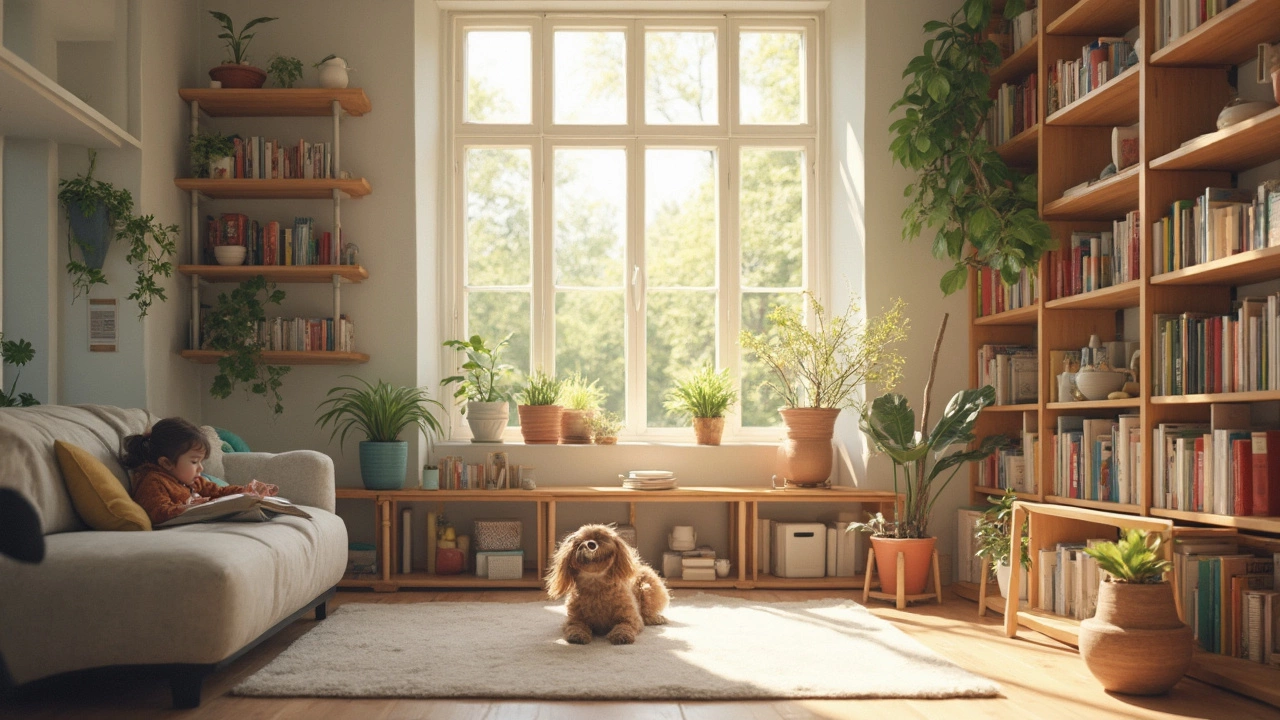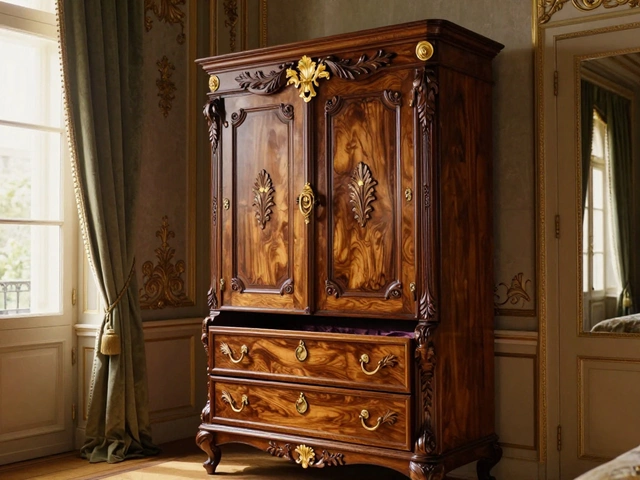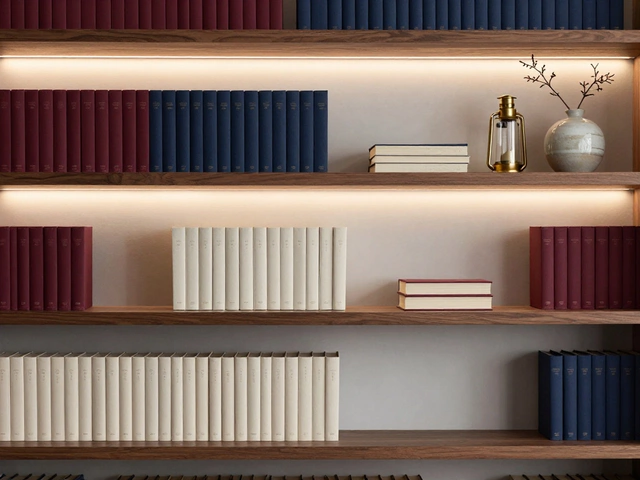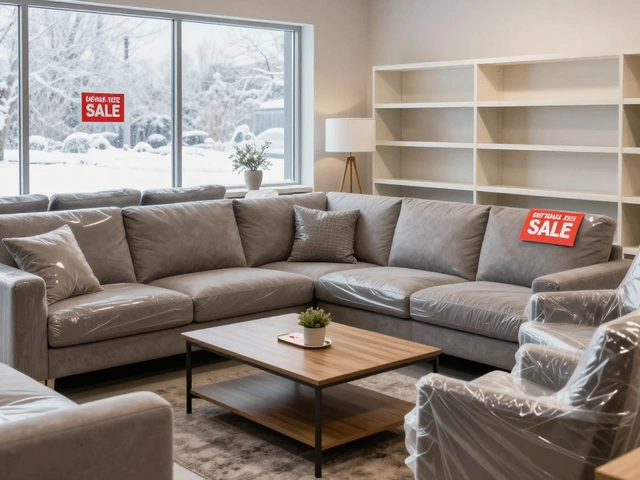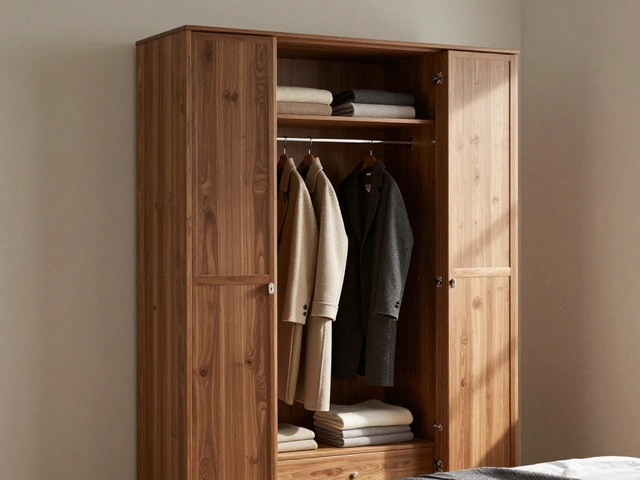The bookshelf you pick isn’t just about holding books—it can change the whole vibe of your room. Let’s face it: the open bookshelf vs closed bookshelf debate isn’t just for design geeks. Regular folks wrestle with it, too. One looks sleek and shows off your collection; the other hides clutter and protects from dust.
If you’ve ever been frustrated by endless dusting or find yourself cramming extra stuff behind closed doors, you know there’s more to this choice than it seems. Before you get stuck scrolling online for hours and overthinking finishes, it helps to know what these bookcases actually do for your space and your life. Each style has real, practical upsides (and a few headaches) you’ll want to know about before you swipe your card.
So, what’s really better—letting your books breathe or locking them away? Let’s break down what matters: cleaning hassles, room style, storage tricks, and even a few money-saving pointers. Your books deserve the right home, and so does your sanity.
- The Basics: What’s Open vs Closed?
- Style and Room Impact
- Cleaning and Maintenance
- Functionality for Different Needs
- Budget and Space Considerations
- Final Tips: Making Your Choice
The Basics: What’s Open vs Closed?
This sounds simple, but there are a couple of surprises when you really look at the difference between an open bookshelf and a closed bookshelf. An open bookshelf—sometimes called an open bookcase or open shelving—has no doors or solid panels at the front. It’s all about easy access, showing off your stuff, and making your room feel more open. No barriers, just shelves.
Closed bookshelves, on the other hand, are built with doors—sometimes glass, sometimes solid wood. You open these doors to reach your books or storage bins. These are basically the “hide away the mess” bookcases, and they do a decent job at limiting dust buildup, too.
- Open bookshelf: Open front, quick access, makes a room feel bigger, everything visible.
- Closed bookshelf: Doors or panels, keeps items hidden, can include locks or glass panels, better for protection.
If you rent or switch up your furniture a lot, it’s handy to know: most flat-pack bookcases (think IKEA) are open by default, and you need to add doors or panels for the closed look. That matters if you don’t want extra fuss or hidden costs later.
Folks sometimes confuse display cabinets with closed bookshelves. Here’s the catch: display cabinets use glass, mostly for collectibles, while closed bookshelves are usually sturdier, built for heavy books, and offer more privacy. And yes, you can mix it up—some models have both open and closed sections, so you can show off your favorite reads and hide the rest.
If you’re into numbers, take a look at this quick comparison of storage style features:
| Feature | Open Bookshelf | Closed Bookshelf |
|---|---|---|
| Easy Access | Yes | No (must open doors) |
| Dust Protection | No | Yes |
| Display Capability | High | Medium (glass doors) to Low |
| Clutter Control | Low | High |
So, when you hear “open” or “closed” bookshelf, it’s all about whether those shelves are out in the open or hiding behind doors. This small detail ends up being a big deal for how your home actually feels and functions day-to-day.
Style and Room Impact
The first thing you notice about a open bookshelf is how it opens up a room, almost like a window on your wall. It shows off your books, plants, and knick-knacks. Spot something cool on the shelf? Guests will, too. Open shelves give your space character, let you get creative with displays, and make everything easy to grab. Minimalist rooms love them, but so do spaces craving a bit of personality without feeling boxed in.
On the other hand, a closed bookshelf is like a closet for your books and stuff. Doors hide messes, mismatched books, or a random tangle of charging cords. It's popular in smaller rooms, bedrooms, or areas where you want less visual clutter. If you go for glass doors, you get a bit of both worlds—showcase your collection but stop dust. Solid doors keep things looking super tidy, almost like a little storage room inside your living space.
Here’s a quick look at how open bookshelf vs closed bookshelf affect your room’s look and feel:
- Open bookshelf: Feels airy, makes rooms seem bigger, especially with lighter colors and slim frames.
- Closed bookshelf: Grounds the room, hides clutter, and can match with cabinets for a uniform look.
- Open shelves fit casual or eclectic styles, while closed shelves often suit more formal, classic, or even modern minimalist spaces.
One little-known tip: Interior designers use open shelves as makeshift room dividers in small apartments, separating a living and dining area while still letting in light. In fact, a 2023 survey of city dwellers found that 34% use open bookcases this way.
But beware—open shelves put everything on display, so a messy stack or a faded book cover stands out. Closed shelves, though, forgive a lot. Have a bunch of board games, photo albums, or kids’ art projects you’re not ready to show off? Chuck them in there and shut the door.
Cleaning and Maintenance
Here’s where the open bookshelf vs closed bookshelf argument usually gets real for most people—especially if you live in a dusty area, have pets, or just hate cleaning. With an open bookshelf, your books and anything else on display are pretty much exposed to everything: dust, cooking fumes, even sunlight that can fade covers. If you stack a lot of things or have knick-knacks, you'll end up wiping down each shelf—and the items on it—at least once every two weeks, sometimes more. Skipping that? Get ready for dusty novels and musty smells.
Closed bookshelves have doors, which means they act as a shield against dust and grime. Doors—solid or glass—cut cleaning time in half. You mostly just need to wipe down the outside surfaces and maybe open up once in a while to get inside if you've got glass panels. One small catch: glass doors pick up fingerprints fast, so they need spot cleaning.
- If you have allergy sufferers in the house, closed shelves are a better bet. They keep pollen and dust mites away from book pages.
- Open bookshelves make it impossible to avoid the "dust line"—that weird strip of grime behind books that nobody likes to see.
- Spills in kitchens or living rooms? Closed shelves give you way more peace of mind, especially if you’ve got kids charging through the house.
| Type | Weekly Cleaning Time | Extra Upkeep Needed |
|---|---|---|
| Open | 15-20 minutes | Wipe every item & Shelf |
| Closed | 5-10 minutes | Mostly exterior; occasional interior |
If you're particular about cleanliness or short on time, go for a closed bookshelf. Want your books on display and don’t mind the regular wipe-down routine? Then an open bookshelf might be worth the effort. Either way, regular maintenance keeps your bookcase and collection looking top notch.
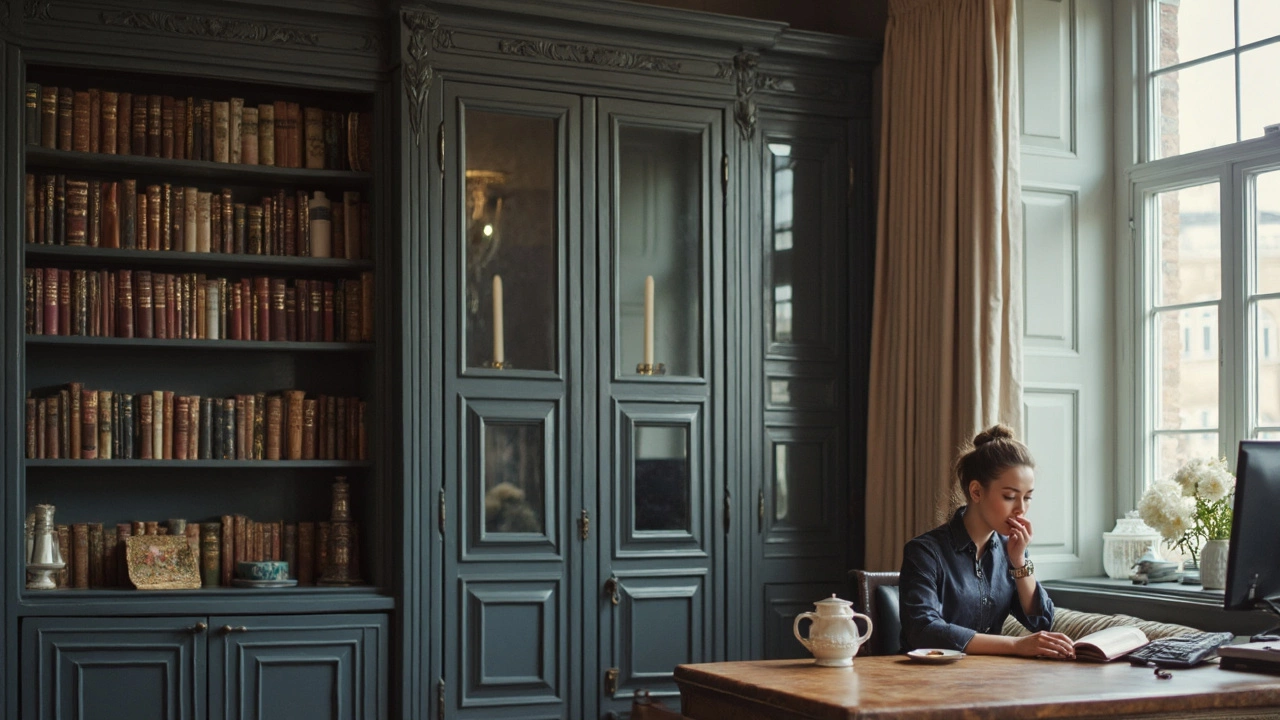
Functionality for Different Needs
Choosing between an open bookshelf and a closed bookshelf isn’t just about looks—it’s also about what you need from your storage. Think about how you use your bookshelf every day.
If you’re a passionate reader who’s grabbing books all the time, an open bookshelf makes life a lot easier. You can spot your favorites at a glance, grab what you want, and swap out your display whenever the mood hits. If you have young kids or pets, you’ll want to be careful. Open shelves can be an open invitation for sticky fingers or a curious cat to knock over your stuff.
On the flip side, a closed bookshelf keeps dust, sunlight, and wandering hands far away from your collection. If you’re storing rare books, family albums, or paperwork, closed cabinets or glass doors make a lot of sense. It’s also solid for multipurpose rooms—put your work files behind the doors, then add some picture frames up top. You've got organization and a little privacy at the same time.
- Open bookshelves are perfect for:
- Daily readers who cycle through books often
- People who love showing off collectibles, plants, or decor
- Spaces needing an open, airy feel
- Closed bookshelves are better for:
- Protecting valuables from dust and sunlight
- Keeping clutter or mess hidden
- Rooms where you want a more formal look
Check out this quick comparison to see how they fit different needs:
| Need | Best Match | Reason |
|---|---|---|
| Quick access | Open bookshelf | No doors—easy grab-and-go |
| Dust protection | Closed bookshelf | Doors keep out dust |
| Display | Open bookshelf | All items are visible |
| Multi-use storage | Closed bookshelf | Hide non-books and clutter |
If you need a bit of both, a mixed style exists—open shelves up top, closed cabinets on the bottom. Good details matter. Adjustable shelving, sturdy construction, and the depth of each shelf make a bigger difference than you’d think, no matter what you pick. Always measure your space before choosing a bookcase. Nobody likes a bookshelf that wobbles, sags, or blocks a doorway.
Budget and Space Considerations
No sense shelling out cash for a bookcase that eats up your whole paycheck or takes over your living room, right? The reality is, both open bookshelf and closed bookshelf styles come in a huge price range. But the closed styles do tend to cost a bit more. Why? Doors, hinges, and, sometimes, fancier materials mean more expense during manufacturing. According to a 2024 furniture retailer survey, enclosed bookcases average about 20% higher in price than open ones of similar size and build.
If you’re working with a tighter budget, simple open shelves usually give you the most bang for your buck. They are easier to DIY, too, if you’re willing to pick up a screwdriver and make your own. Even some big brands sell basic open units for less than $100, while closed options usually start a bit higher.
Now, let’s talk space. Open shelves feel lighter visually, making small rooms look way less cramped. Closed cases, especially bulky ones, can swallow up precious floor space and make a room feel boxy. If square footage is tight, height is your friend. Go for a tall, narrow open shelf instead of a wide, deep closed one. City dwellers, this tip is for you.
| Bookcase Type | Average Starting Price | Space Needed |
|---|---|---|
| Open Bookshelf | $80 | Less (slim designs available) |
| Closed Bookshelf | $120 | More (accounts for doors/panels) |
Another thing: don’t forget to measure your baseboards and outlets. Closed bookcases are often flush with the wall, which can mess with plugs and heat vents. Open shelves usually offer more airflow and let you work around weird room quirks.
So if budget or space is a real headache for you, open shelving almost always makes it easier—both on your wallet and your square footage. But if you’ve got the room and the money, closed cases can give you more storage options. Just don’t be surprised by those extra costs when you get to the checkout screen.
Final Tips: Making Your Choice
Still stuck between an open bookshelf and a closed bookshelf? Let’s make it simple. Start by thinking about your real life, not just how magazine homes look. Do you love showing off your book covers and knick-knacks? Or do you want your space to look cleaner with less effort?
Here are some quick-fire factors to help your choice feel obvious, not overwhelming:
- If you live in a dusty area, a closed bookshelf means much less cleaning. A 2022 survey by Home Clean Living found people with open shelving dust up to twice as often.
- Got kids or pets? Closed doors on a bookshelf can help keep paws—and sticky hands—off your prized books and collectibles.
- Renting or moving a lot? Open units are lighter and easier to take apart or rearrange. They fit with more decor styles too, so you don’t have to buy all new stuff every couple of years.
- Tight on space? Open shelves make small rooms feel bigger because your eye isn’t blocked by doors. Still, closed bookcases can double up as extra flat surfaces—think photos or plants on top without a display overload.
It’s not all-or-nothing, either. Some brands now make hybrid shelves with a few closed cabinets at the bottom and open racks up top. This combo covers both display and storage needs.
| Feature | Open Bookshelf | Closed Bookshelf |
|---|---|---|
| Dust Protection | Low | High |
| Display Value | High | Medium |
| Safety (Kids/Pets) | Medium | High |
| Room Impact | Open, Airy | Contained, Clean Look |
Your final decision should hinge on what annoys you more: dusting or clutter. If you like quick access and showing off your books, go open. If you want hidden storage and less cleaning, go closed. And if you’re indecisive? You can always blend both for a smart, practical look that covers all bases.

